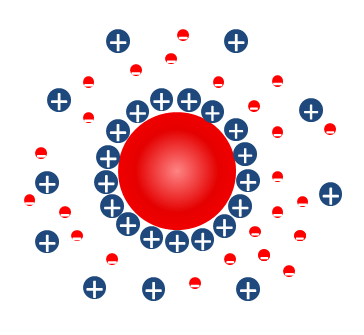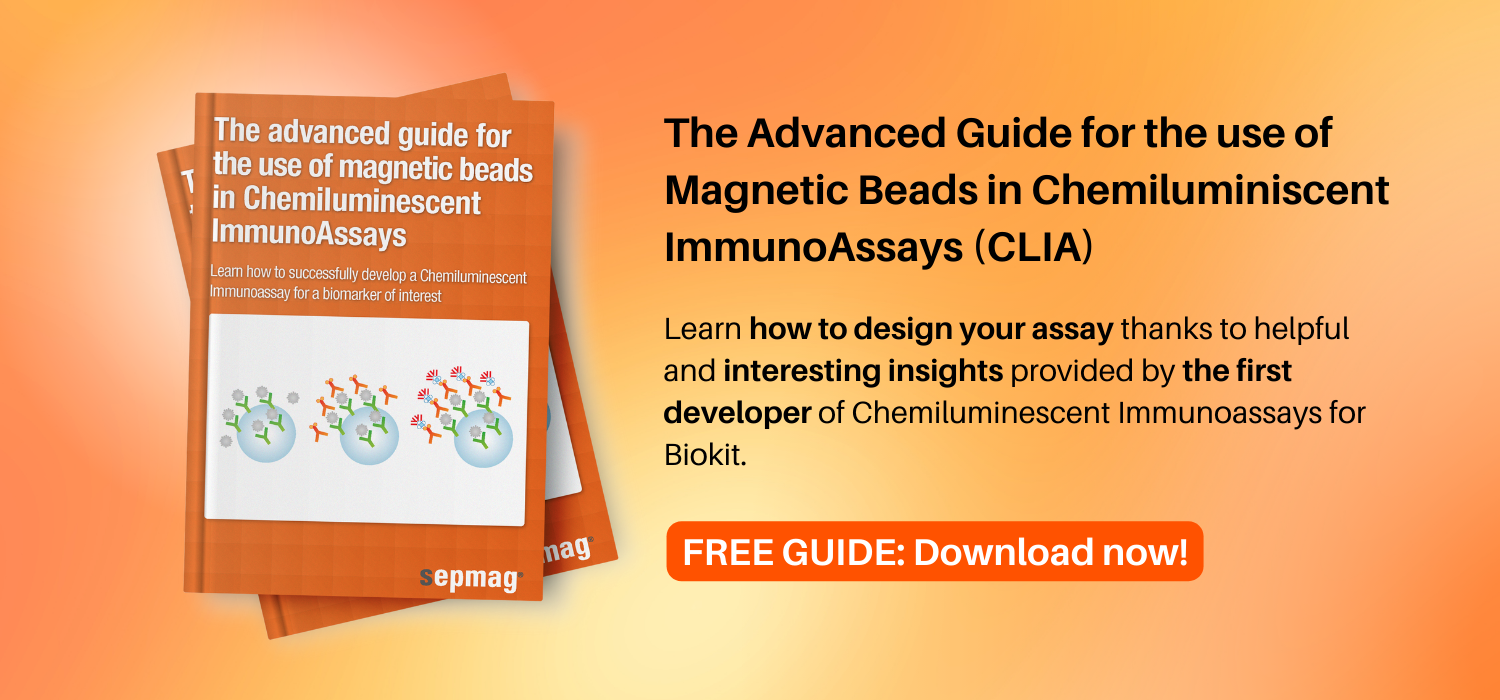In vitro diagnostic (IVD) applications frequently make use of nanoparticles as solid-phase carriers for a given capture molecule. In order to be utilized in this manner, nanoparticles must first be coated, thereby attaching the capture molecules to the particles. There are notable differences in the way that different types of particles are coated, and this will be a significant factor in the decision to utilize one particle over another in a given assay, for example, streptavidin beads or latex particles.
This post is about choosing the right platform for a given biomarker. If you want detailed information about this topic, download our free ebook The Advanced Guide for the use of Magnetic Beads in Chemiluminescent Immunoassays:
About collodial gold particles
Colloidal gold particles, for instance, traditionally attach capture molecules via passive adsorption. This sort of attachment typically relies on hydrophobic, electrostatic and Van der Waals interactions to bind the molecule to the particle. This type of binding allows for very little control over the final orientation of the attached molecule. It is not uncommon, as a consequence, to have multiple layers of a capture molecule bound to a particle. The first layer of proteins used to suffer from huge conformational changes, as they can be partially or totally denatured. Because of this, problems with stability of the capture molecule may arise as a result, particularly for those type of assays where little loss of capture molecule critically affects the performance of the assays, such as the competitive type. The increased commercial availability of carboxylated colloidal gold particles and gold particles conjugated with molecules such as streptavidin, protein A, and protein G, broadens the range of applications with which these particles can be utilized.
The differences with latex and magnetic particles
Latex and magnetic particles, however, have historically had a wider spectrum of activations available because of their polymeric nature. This makes this particles capable of attaching molecules via a greater variety of covalent bond types besides passive adsorption. As such, the amount of protein required for coating these particles is often less than what is required to coat colloidal gold particles. Additionally, the capture molecule is oriented in a predictable way, because the site by which it is bound to the particle is specific and well-defined. The covalent binding allows for maximal exposure of the capture molecule’s reactive site, a more uniform coupling, better lot-to-lot reproducibility and the use of chemical linkers or spacers, among other advantages.
Don't forget to check these posts from our blog in order to get a deeper insight into magnetic particles and immunoassays:






